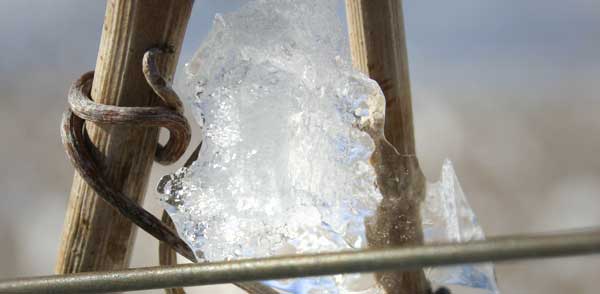HARVEST REPORT – 2003
The 2003 harvest in the high altitude wine country of Mendoza, Argentina was of exceptional quality and perhaps even surpassing the historic 2002 vintage.
The winter of 2002 was cold and dry in the Mendoza valley. The Andes, however, experienced a great deal of snow in the mountain heights. While offering an excellent ski season, this also assured an abundant amount of irrigation water for the upcoming growing season.
Spring arrived with moderate to warm temperatures and dry conditions, with just a few rains during the second week of October. This climatic environment allowed for a good bud break, flowering, and set. The remainder of Spring was characterized by warm, sunny conditions resulting in an excellent start to the growing season.
Summer began with dry and warmer than usual temperatures in the month of January. While some areas and vineyards experienced sunburn from the increased heat, carefully managed irrigation allowed for the Catena Zapata vineyards to avoid damage.
February, witch is statistically the month with the most precipitation, was very sunny and unusually dry. While the tendency for greater temperatures continued, it was accompanied by the onset of colder nighttime conditions. This increase in thermal amplitude meant that the vines expended less energy than usual at night, energy which was then available to be used in the ripening process. While the warmer temperatures threatened a rapid accumulation of sugars, careful use of irrigation slowed this process and ensured an even maturation.
The weather conditions in the all important ripening months of March and April continued dry with a marked reduction in maximum temperatures. This created the ideal environment to finish the maturation cycle slowly and gradually. The absence of climatic dangers allowed the fruit to enjoy an exceptionally long hang time, resulting in harvest at an optimum level of ripeness.
These climatic conditions were also constant throughout the entire region of Mendoza. All varietals in each of the different vineyards and microclimates offered their typically unique profile of flavors and aromas. When implementing the winemaking concept of microclimate blending, in which varietal lots from different microclimates are blended to create a more complex wine, the 2003 vintage offers a wide array of excellent blending components.

The Chardonnay grapes showed excellent varietal character, with ripe fruit flavors ranging from tropical to pear and citrus, depending on the area. All microclimates showed great balance and bright, crisp acidity. Harvest occurred on average one week earlier than usual.
The 2003 vintage marks the first year in which some alternative varietals reached outstanding quality. Cabernet Franc and Petit Verdot from the La Pirámide vineyards will offer interesting components in our final wines.
The Malbec grapes were also harvested at ideal levels of ripeness. The incorporation of increased lots of cool climate, high altitude Malbec will surely mark a new era in the production of this most Argentine of grapes.
Without doubt, the star of the 2003 vintage was Cabernet Sauvignon. All lots offered excellent concentration of varietal flavors and aromas, each with their particular character. They have intensity and structure with very finely grained tannins and long, persistent finishes. Indeed, our winemaker, we arealready looking forward to beginning the blending process. We will have the pleasure of weaving these different lots into a unique, singular wine.